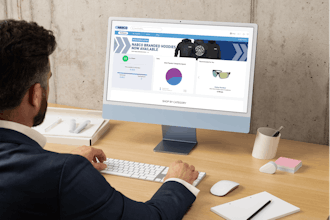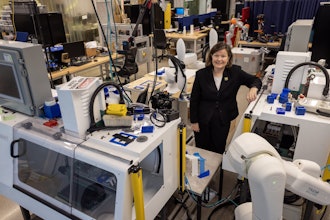
Many distributors think they don’t have the time or resources to implement new tools or processes for a digital transformation. Or they believe that what they’re doing is working, so they don’t need to change.
But if distributors aren’t willing to adapt to the changing needs and wants of customers, they’ll be leaving money on the table and losing customers to more forward-thinking competitors.
The Drivers of Digital Transformation
The push for digital transformation comes from different directions.
1. Customers: Customers want more flexibility and say in how and when they do business with their partners. That includes a desire to do more business digitally, from looking up product or account information to entering quotes and expediting purchase orders.
2. Suppliers: Manufacturers are also looking for ways to do business more efficiently and accurately within their supply chain. This might include digital delivery of advanced shipping notices or making it easy for customers to initiate return merchandise authorizations.
3. Competitors: Even if you’re not changing what you do, odds are at least some of your competitors are. Distributors that invest in technology for improved customer experience, better visibility and increased sales opportunities will get the lion’s share of available business.
The hesitation to implement new technologies is understandable. It requires a significant investment in time and money. However, the real driver of digital transformation - of adopting new capabilities - is to remove friction from business processes and to deliver better customer service.
If you fail to provide the customer service your clients expect, you’ll end up without customers to serve.
How to Implement Digital Transformation: Start with the Customer
Once you’ve determined that you’re ready to embrace a digital transformation, the next step is to create a roadmap to get there. Start with an assessment of where you and your customers are because chances are you aren’t in the same place.
- Assess your customer's digital readiness. Are your customers ahead or behind you in their adoption of digital? What are they requesting, and are you able to provide it
- Assess what the digital innovation leaders are doing. What is your competition providing customers that you aren't? Where are they going to be in the next three to five years
- Assess where you are in terms of digital readiness. Measure your capabilities in relation to your customers, suppliers and competitors, and identify where you can reduce the friction of business to improve customer service.
If you're behind your customers, focus first on catching up to them.
Your customers may already have software to manage inventory or to help their customers place and expedite orders electronically. Many of your customers might be happy to never see a sales rep again – or at least would like to see them far less than they do today. How can you continue providing service if they don’t want the sales guy interrupting their day?
The only way to know is to talk with them about where they are and what you can do to help them get where they want to go. Distribution is still a relationship business, but for many people, the nature of that relationship has already fundamentally changed.
If you're on par with your customers, look at digital technology to reduce manual labor and inefficient processes.
There are many tools to address inefficient processes, reduce general and sales administrative expenses, and improve accuracy and productivity. Every manual touchpoint in the supply chain introduces an opportunity for human error.
What technology can help you streamline the quote/order process and the order-to-cash cycle? How can an ecommerce site allow you to serve customers better? Are you using your CRM to its fullest potential to gather customer buying data and drive sales? Can you improve warehouse practices with new technologies?
Build Your Roadmap
A successful digital transformation plan is best accomplished incrementally. Ultimately, you need to set a goal to keep moving forward and it should be based on customer insight rather than sales insight.
Sales reps are good at listening to negotiate, but they typically need help understanding the client's pain points. Only your customers can give you the information (and brutal truths) that can help reduce the friction of business and serve them better.
Your roadmap should focus on multiyear investment, with the first year defined by aggressive funding for realistic goals. But keep in mind that you’re not writing your plan in stone. Monitor the results of the launch carefully to learn how to react and adapt the following year.
Avoid Common Traps
Distributors are busy, and falling into any of these traps will prevent a successful digital transformation:
- Underestimating the time and effort to plan and implement digital technologies.
- Relying on your IT department to conduct research and implement these technologies.
- Choosing the wrong person to lead the project.
Resources exist to help you avoid common pitfalls in effective digital transformation. Invest with consultants and other practitioners that do this for a living to help plan your journey. For example, Grainger engaged McKinsey years ago to help develop its roadmap, and now 50% of Grainger’s revenue comes through digital channels, which was the company’s goal.
Digital transformation is about changing your processes; it's not about doing the same things better. Include your customers from the start and keep them as your focus throughout the process. By doing so, you'll keep ahead of the competition by improving customer service, supplier partnerships and your bottom line.
Mike Marks is the founding partner of the Indian River Consulting Group and a longtime distribution manager.






















